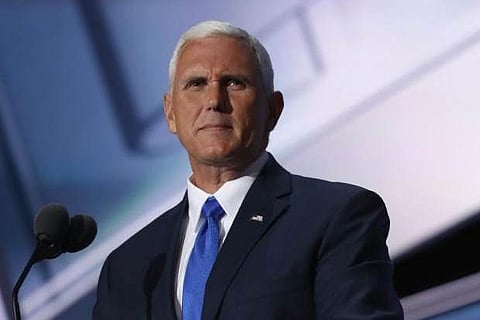

Washington
Elsewhere in the building, Senate Majority Leader Chuck Schumer and House Speaker Nancy Pelosi were making a similarly dire appeal to military leaders, asking the Army to deploy the National Guard.
“We need help,” Schumer, D-N.Y., said in desperation, more than an hour after the Senate chamber had been breached.
At the Pentagon, officials were discussing media reports that the mayhem was not confined to Washington and that other state capitals were facing similar violence in what had the makings of a national insurrection.
“We must establish order,” said Gen. Mark Milley, chairman of the Joint Chiefs of Staff, in a call with Pentagon leaders.
But order would not be restored for hours.
These new details about the deadly riot are contained in a previously undisclosed document prepared by the Pentagon for internal use that was obtained by The Associated Press and vetted by current and former government officials.
The timeline adds another layer of understanding about the state of fear and panic while the insurrection played out, and lays bare the inaction by then-President Donald Trump and how that void contributed to a slowed response by the military and law enforcement.
It shows that the intelligence missteps, tactical errors and bureaucratic delays were eclipsed by the government's failure to comprehend the scale and intensity of a violent uprising by Americans.
With Trump not engaged, it fell to Pentagon officials, a handful of senior White House aides, the leaders of Congress and the vice president holed up in a secure bunker to manage the chaos.
While the timeline helps to crystalize the frantic character of the crisis, the document, along with hours of sworn testimony, provides only an incomplete picture about how the insurrection could have advanced with such swift and lethal force, interrupting the congressional certification of Joe Biden as president and delaying the peaceful transfer of power, the hallmark of American democracy.
Lawmakers, protected to this day by National Guard troops, will hear from the inspector general of the Capitol Police this coming week.
“Any minute that we lost, I need to know why,” Sen. Amy Klobuchar, D-Minn., chair of the Senate Rules and Administration Committee, which is investigating the siege, said last month.
The timeline fills in some of those gaps.
At 4:08 pm on January 6, as the rioters roamed the Capitol and after they had menacingly called out for Pelosi, D-Calif., and yelled for Pence to be hanged, the vice president was in a secure location, phoning Christopher Miller, the acting defense secretary, and demanding answers.
There had been a highly public rift between Trump and Pence, with Trump furious that his vice president refused to halt the Electoral College certification.
Interfering with that process was an act that Pence considered unconstitutional. The Constitution makes clear that the vice president's role in this joint session of Congress is largely ceremonial.
Pence''s call to Miller lasted only a minute. Pence said the Capitol was not secure and he asked military leaders for a deadline for securing the building, according to the document.
By this point it had already been two hours since the mob overwhelmed Capitol Police unprepared for an insurrection. Rioters broke into the building, seized the Senate and paraded to the House. In their path, they left destruction and debris. Dozens of officers were wounded, some gravely.
Just three days earlier, government leaders had talked about the use of the National Guard. On the afternoon of January 3, as lawmakers were sworn in for the new session of Congress, Miller and Milley gathered with Cabinet members to discuss the upcoming election certification. They also met with Trump.
In that meeting at the White House, Trump approved the activation of the D.C. National Guard and also told the acting defense secretary to take whatever action needed as events unfolded, according to the information obtained by the AP.
The next day, January 4, the defense officials spoke by phone with Cabinet members, including the acting attorney general, and finalized details of the Guard deployment.
The Guard's role was limited to traffic intersections and checkpoints around the city, based in part on strict restrictions mandated by district officials. Miller also authorized Army Secretary Ryan McCarthy to deploy, if needed, the DC Guard's emergency reaction force stationed at Joint Base Andrews.
Visit news.dtnext.in to explore our interactive epaper!
Download the DT Next app for more exciting features!
Click here for iOS
Click here for Android